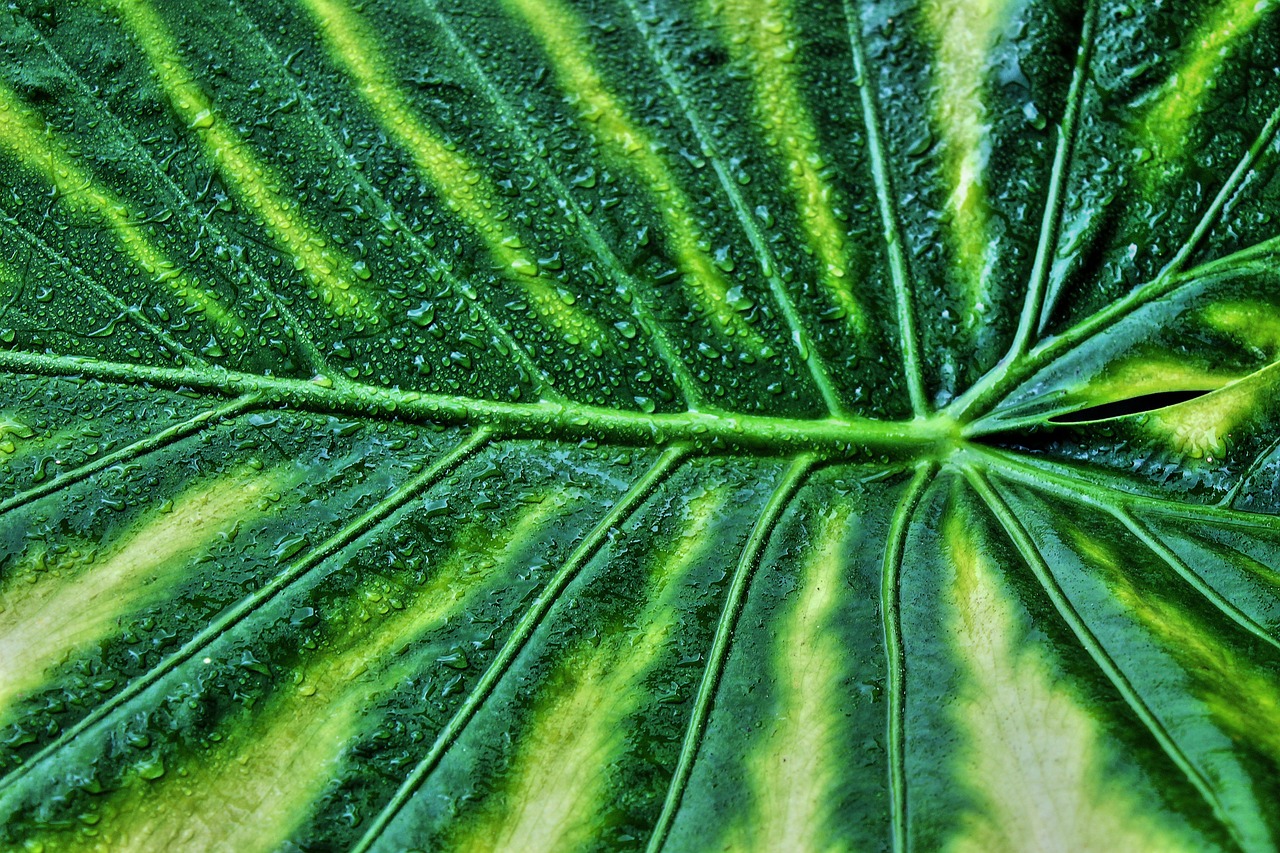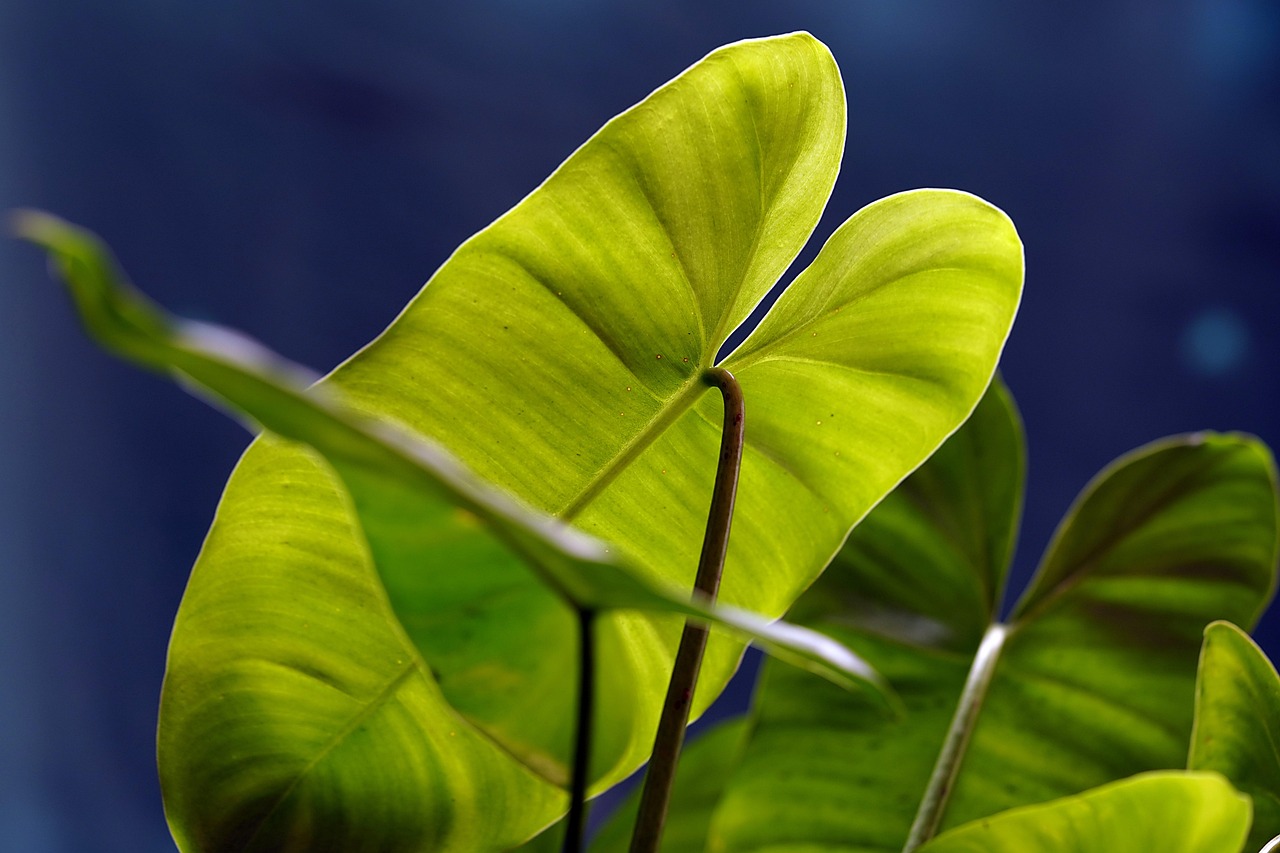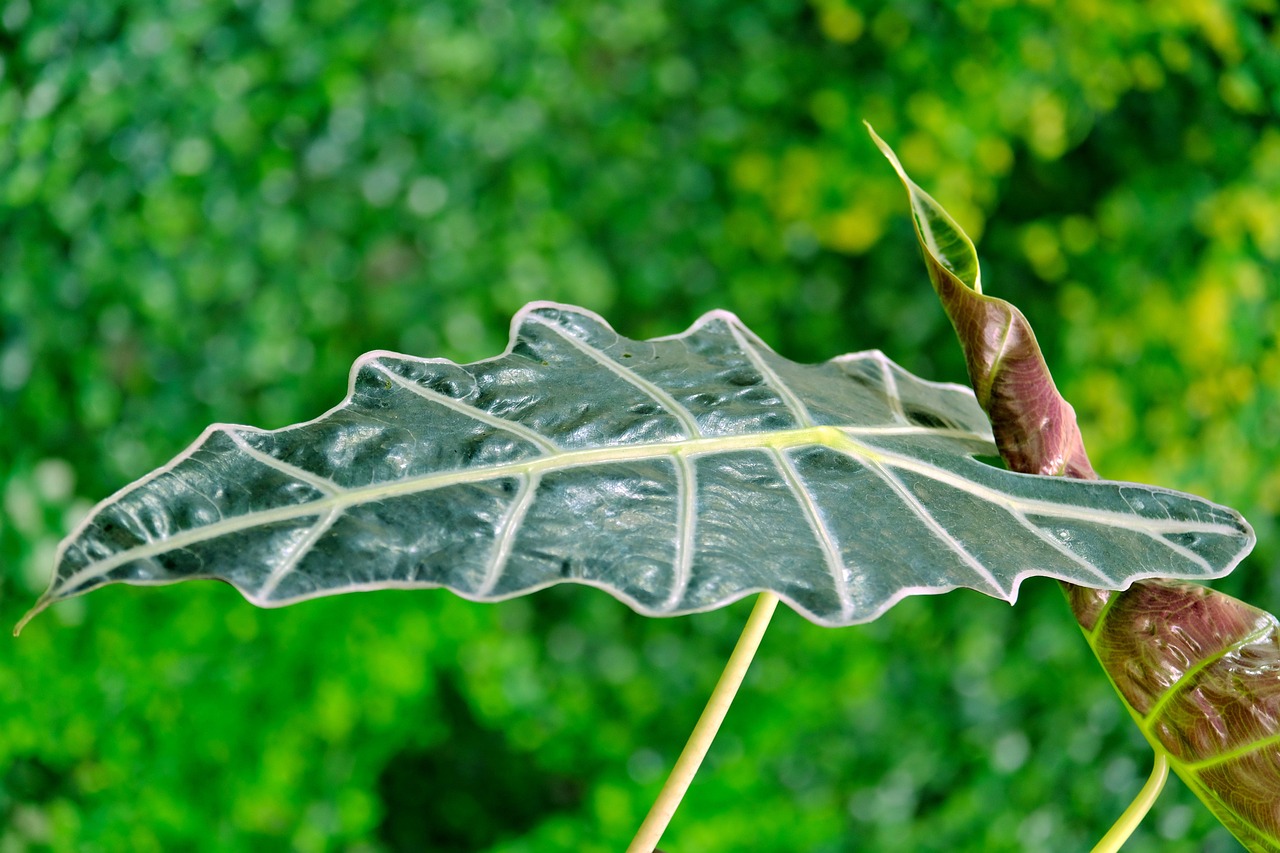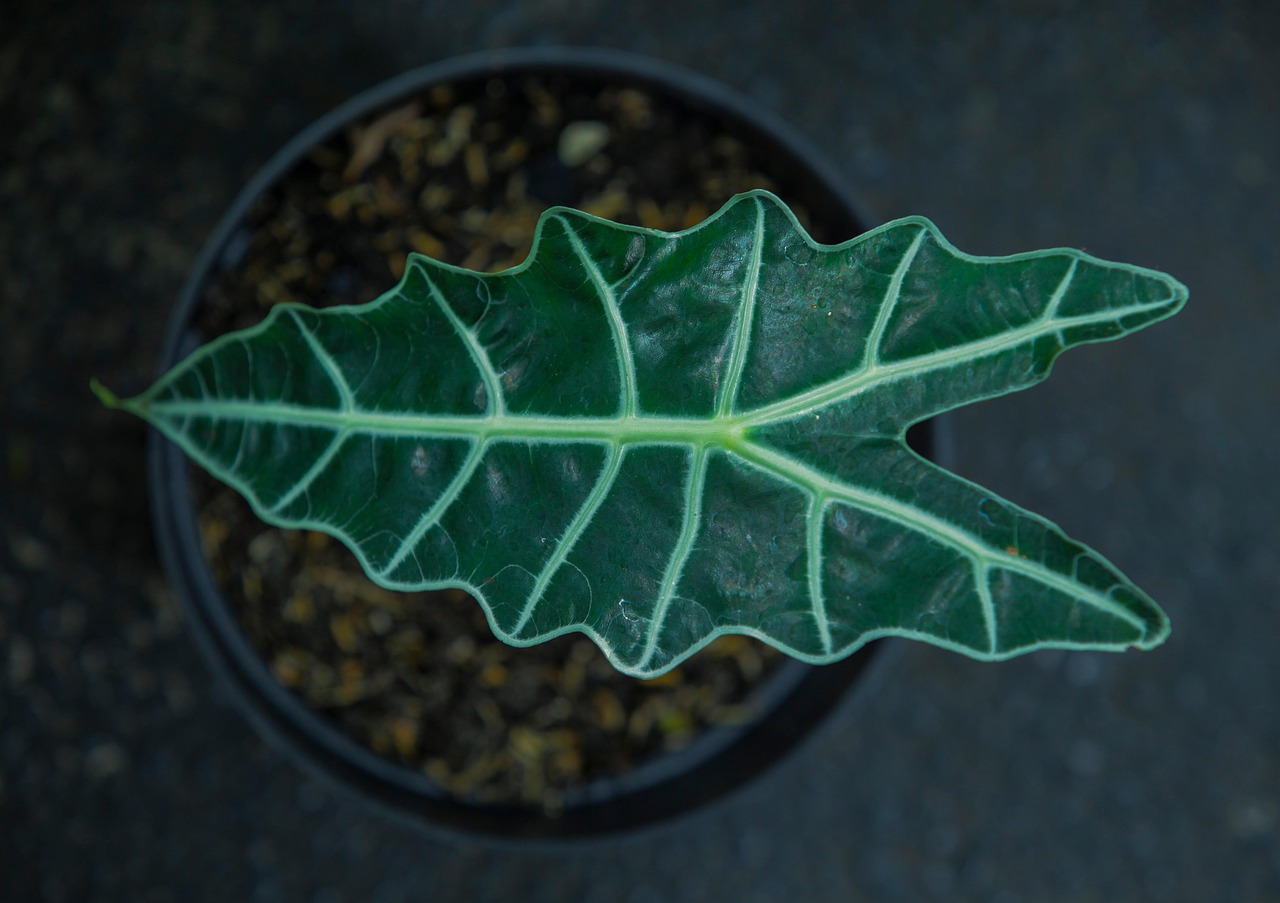Alocasia Bisma is a rare tropical plant known for its striking foliage and unique growth habits. It thrives in humid environments and requires specific care to flourish. This guide explores its various types, care requirements, and tips for successful cultivation.
Introduction to Alocasia Bisma

The Alocasia genus includes several species, but Alocasia Bisma stands out due to its rarity and distinctive characteristics. Originating from Southeast Asia, this plant is a favorite among collectors and plant enthusiasts. Its large, arrow-shaped leaves can create a dramatic presence in any indoor garden or landscape.
One of the most appealing aspects of the Alocasia Bisma is its ability to adapt to different conditions, making it suitable for both novice and experienced gardeners. However, it does have specific needs regarding light, water, and humidity that must be met to ensure optimal health and growth.
Due to its rarity, acquiring an Alocasia Bisma can be a challenge. Many local nurseries may not carry this species, and online availability can vary significantly. Understanding the different varieties available can enhance your chances of finding the perfect plant for your collection.
Varieties of Alocasia Bisma
Alocasia Bisma comes in a few notable varieties, each with unique features. While they share similar care requirements, their appearances can differ significantly. Here are some of the most recognized varieties:
- Alocasia Bisma ‘Green Velvet’: This variety features deep green leaves with a velvety texture, providing a lush appearance.
- Alocasia Bisma ‘Silver Dragon’: Known for its striking silver veins on dark green leaves, this variety adds a unique aesthetic appeal.
- Alocasia Bisma ‘Dark Star’: With almost black foliage and prominent leaf veins, this variety is sought after for its dramatic look.
Basic Care Requirements
Caring for Alocasia Bisma can be straightforward when you understand its basic needs. Here are the essential factors to consider when growing this beautiful plant:
| Care Factor | Requirements |
|---|---|
| Light | Bright, indirect sunlight is ideal. Avoid direct sunlight to prevent leaf burn. |
| Water | Keep the soil consistently moist but not soggy. Water when the top inch of soil feels dry. |
| Humidity | High humidity (60% or more) is essential. Consider using a humidifier or pebble tray. |
| Temperature | Ideal temperatures range from 65°F to 80°F (18°C to 27°C). |
| Soil | Use well-draining potting mix rich in organic matter. |
Understanding these care requirements is crucial for maintaining the health of your Alocasia Bisma. With proper attention to its environment, this plant can thrive and become a stunning focal point in your home or garden.
As you delve deeper into caring for Alocasia Bisma, consider the unique traits of each variety. This knowledge will enrich your experience and help you select the best plant for your collection.
Propagation of Alocasia Bisma
Propagation is a great way to expand your collection of Alocasia Bisma or share it with friends. This process allows you to create new plants from an existing one. There are a couple of effective methods for propagating Alocasia Bisma: division and offsets.
Division Method
The division method involves separating the plant into smaller sections, each with its own root system. This is best done during the spring or early summer when the plant is actively growing. Here are the steps to follow:
- Preparation: Gather tools such as a sharp, clean knife, potting soil, and pots.
- Remove the Plant: Carefully take the Alocasia Bisma out of its pot. Gently shake off excess soil to expose the roots.
- Divide the Roots: Look for natural divisions in the root ball. Using your knife, separate the sections ensuring each has roots and a leaf.
- Re-pot: Place each divided section into its pot filled with fresh potting mix. Water lightly to settle the soil.
- Care: Keep the new plants in a warm, humid environment until they establish roots.
Offsets Method
Offsets, or pups, are small plants that grow at the base of the main plant. They can be removed and potted up separately. Follow these steps to propagate using offsets:
- Identify Offsets: Look for small plants emerging from the base of the Alocasia Bisma.
- Sever the Offset: Use a clean knife to cut the offset from the parent plant, ensuring it has some roots.
- Potting: Plant the offset in a small pot with well-draining soil, similar to what is used for the parent plant.
- Watering: Water the newly potted offset lightly and place it in a warm location with indirect light.
Pest and Disease Management
Like many houseplants, Alocasia Bisma can be susceptible to various pests and diseases. Being proactive about prevention and management can help ensure your plant remains healthy.
Common Pests
The most common pests affecting Alocasia Bisma include:
- Spider Mites: These tiny pests can cause yellowing leaves and webbing on the plant. Increase humidity to deter them and treat with insecticidal soap if needed.
- Aphids: These small insects suck sap from leaves, leading to deformation. Regularly check for their presence and use neem oil for treatment.
- Mealybugs: These pests appear as white cottony masses on stems and leaves. Remove them with a cotton swab dipped in alcohol or apply an insecticidal solution.
Disease Prevention
Diseases can also affect Alocasia Bisma, often due to environmental stress or improper care. Here are some common diseases:
- Root Rot: Caused by overwatering or poorly draining soil. Ensure proper drainage and allow soil to dry out slightly between waterings.
- Leaf Spot: This fungal disease appears as dark spots on leaves. Improve air circulation and avoid overhead watering to prevent it.
If you notice any signs of pests or diseases, act quickly to minimize damage. Regularly inspecting your plant can help catch issues early.
Fertilizing Alocasia Bisma
Fertilization is essential for promoting healthy growth in Alocasia Bisma. Using the right type of fertilizer at the appropriate times can encourage vibrant foliage and overall plant vitality.
Types of Fertilizers
Consider using these types of fertilizers for your Alocasia Bisma:
- Balanced Liquid Fertilizer: A diluted balanced liquid fertilizer can be applied every month during the growing season (spring and summer).
- Slow-Release Fertilizer: This can be mixed into the soil at the beginning of the growing season for continuous feeding.
Application Tips
When applying fertilizers, keep these tips in mind:
- Always dilute liquid fertilizers according to package instructions to avoid burning the roots.
- Avoid fertilizing during the fall and winter months when the plant is dormant.
- Monitor your plant’s response to fertilization, adjusting frequency based on growth patterns.
Caring for your Alocasia Bisma through proper propagation, pest management, and fertilization will enhance its beauty and lifespan, making it a rewarding addition to your plant collection.

2>Common Issues with Alocasia Bisma
Even with the best care, Alocasia Bisma can experience various issues that may affect its health and appearance. Recognizing these problems early is essential for effective management. Below are some common issues and their potential solutions.
Leaf Yellowing
One of the most frequent concerns for Alocasia Bisma owners is leaf yellowing. This can occur due to several reasons:
- Overwatering: Excess water can lead to root rot, causing leaves to yellow. Ensure that the pot has proper drainage and allow the top inch of soil to dry out before watering again.
- Underwatering: On the flip side, insufficient water can also cause yellowing leaves. Monitor the soil moisture closely and maintain consistent watering.
- Pest Infestation: Pests like spider mites and aphids can stress the plant, leading to yellowing. Inspect your plant regularly for any signs of pests.
Brown Leaf Tips
Brown tips on the leaves of Alocasia Bisma are another common issue. This can be attributed to:
- Low Humidity: Alocasia plants thrive in high humidity. If the air is too dry, the leaf tips may turn brown. Consider using a humidifier or misting the leaves regularly.
- Fluoride Sensitivity: Alocasia Bisma may be sensitive to fluoride found in tap water. If you notice brown tips, try using distilled or rainwater instead.
- Nutrient Deficiencies: A lack of essential nutrients can also result in brown leaf tips. Regular fertilization during the growing season can help prevent this issue.
Wilting Leaves
Wilting leaves can be a sign of stress, typically due to improper watering practices:
- Overwatering: As with yellowing, too much water can cause roots to rot, leading to wilting. Check the roots for signs of decay if this occurs.
- Underwatering: If left too dry, the plant may wilt as it struggles to maintain hydration. Adjust your watering schedule based on the plant’s needs.
Choosing the Right Pot for Alocasia Bisma
The choice of pot can significantly affect the health of your Alocasia Bisma. Here are some factors to consider when selecting a pot:
Size
The pot size should correspond with the plant’s growth stage. A pot that is too small can restrict root growth, while a pot that is too large can retain excess moisture. Here are some guidelines:
- For Young Plants: Choose a pot that is 1-2 inches wider in diameter than the current root ball.
- For Mature Plants: A larger pot may be needed as the plant grows, but avoid going more than 2 inches larger than the previous pot.
Material
The material of the pot also plays a role in drainage and moisture retention:
- Terracotta Pots: These clay pots allow for excellent airflow and drainage but may dry out quickly. They are ideal for preventing overwatering.
- Plastic Pots: While they retain moisture longer, they may not provide adequate airflow. Ensure they have drainage holes.
Drainage Holes
No matter what material you choose, ensure that the pot has sufficient drainage holes. Proper drainage prevents water from accumulating at the bottom, reducing the risk of root rot.
Seasonal Care Adjustments
Caring for Alocasia Bisma requires adjustments based on seasonal changes. Understanding how to modify care throughout the year is crucial for maintaining a healthy plant.
Spring and Summer Care
During the growing season, your Alocasia Bisma will require more attention:
- Increased Watering: As temperatures rise, you may need to water more frequently to keep the soil consistently moist.
- Fertilization: Apply fertilizer monthly to support growth during this active period.
- Pest Monitoring: Warmer weather can bring more pests. Check your plant regularly and take action if required.
Fall and Winter Care
The cooler months require different care considerations:
- Reduced Watering: Cut back on watering frequency, allowing the top layers of soil to dry out between waterings.
- No Fertilization: Most plants enter dormancy during winter months; avoid fertilizing until spring.
- Temperature Control: Keep your Alocasia Bisma away from cold drafts and maintain a consistent temperature indoors.
By being aware of these seasonal adjustments, you can ensure your Alocasia Bisma remains healthy and vibrant throughout the year.
Common Myths about Alocasia Bisma
As with many rare plants, several myths surround Alocasia Bisma. Understanding these misconceptions can help you care for your plant more effectively.
Myth 1: Alocasia Bisma is Poisonous
While it is true that many Alocasia species contain calcium oxalate crystals, which can be harmful if ingested, Alocasia Bisma is not particularly toxic. However, it is still essential to keep it out of reach of pets and small children. If ingested in large quantities, it can cause irritation.
Myth 2: Alocasia Plants are Difficult to Care For
Some believe that Alocasia plants, including Bisma, are challenging to grow. In reality, they can thrive with the right conditions and care. Understanding their specific needs regarding humidity, light, and watering is crucial for success.
Myth 3: Alocasia Bisma Grows Only Outdoors
Another common misconception is that Alocasia Bisma can only be grown outdoors. While this plant does enjoy tropical conditions typically found outdoors, it can flourish indoors as well. Providing adequate light and humidity indoors allows it to thrive year-round.
Popular Uses for Alocasia Bisma

>Alocasia Bisma is not just admired for its beauty; it also serves various functional purposes:
- Indoor Decoration: The striking foliage makes it an excellent choice for enhancing indoor spaces. It can serve as a focal point in living rooms, offices, or other areas.
- Air Purification: Like many houseplants, Alocasia Bisma can help improve indoor air quality by filtering out toxins.
- Gardening Aesthetics: In outdoor gardening, Alocasia Bisma can add texture and height to landscaping, creating a tropical atmosphere.
Further Resources for Plant Enthusiasts

>If you’re eager to learn more about caring for Alocasia Bisma or other rare plants, consider exploring the following resources:
- Books: Look for books dedicated to houseplant care or tropical plants for in-depth knowledge.
- Online Forums: Join plant enthusiast communities on platforms like Reddit or Facebook to share experiences and tips.
- YouTube Channels: Many plant care experts provide visual tutorials on YouTube, covering everything from propagation to pest management.
Engaging with these resources can deepen your understanding and enhance your skills as a plant owner.
Final Thoughts
Caring for Alocasia Bisma can be a rewarding experience. With its unique foliage and fascinating growth habits, it adds beauty and character to any space. By understanding its specific needs—such as light, humidity, and watering—you can create an environment where this rare plant thrives.
From propagation techniques to seasonal care adjustments, taking the time to learn about Alocasia Bisma will enhance your overall enjoyment of this stunning tropical plant. Whether you’re a seasoned collector or a novice gardener, the journey of nurturing Alocasia Bisma will undoubtedly enrich your love for plants and nature.
Remember that each plant is unique, and observing its growth patterns will guide you in providing the best care possible. Enjoy the process of growing Alocasia Bisma and all the beauty it brings to your home!
